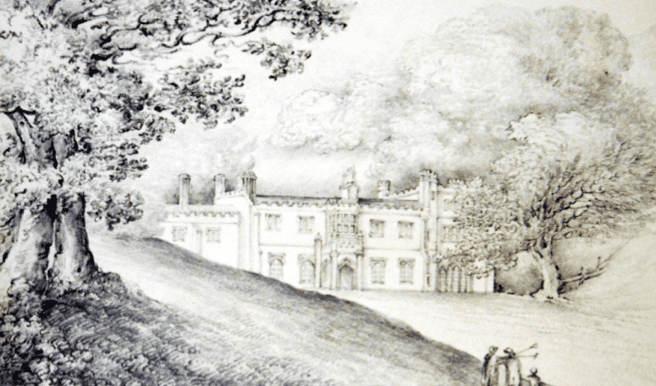
Unknown artist and date.
Reproduced with permission of Surrey History Centre
In 1649 the Duke of Norfolk’s surveyor remarked on Dorking’s ‘pleasant hills and… salubrious air’. In 1652 the Duke’s son created a small estate at ‘Dibden’ (Deepdene).
By the 1740s word had spread. Emmanuel Bowen proclaimed the air of ‘Darking’ the sweetest in England.
As travel grew swifter and more comfortable, the new wealthy of London built country residences within coaching distance of their business interests. Farms were incorporated into the estates of merchants and financiers who sought to ‘improve’ the landscape. Chart Park had hanging gardens, Bury Hill ornamental lakes, and the Deepdene an ornamental ruin. Elements of these naturalistic but artificial park landscapes can still be seen today.
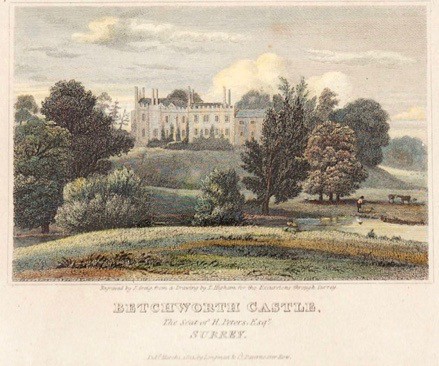
Betchworth Castle
The fortified house of West Betchworth was traditionally home to the lords of that manor. Betchworth Castle was built in the 11th century by Robert Fitz Gilbert to be used as an earthwork fortress. In 1379 Sir John Fitzalan turned it into a stone castle. in the 15th century the castle was rebuilt by Sir Thomas Browne.
In 1798 the estate stretched from the zigzag at Box Hill to beyond Blackbrook. Sir John Soane was commissioned by the owner, Henry Peters to design alterations to the house and park; the stable block remains but converted into houses.
The house was bought by Henry Hope to add to his Deepdene estate in 1834, and much of the masonry was removed for work elsewhere. The Castle was allowed to collapse to create a picturesque ruin.
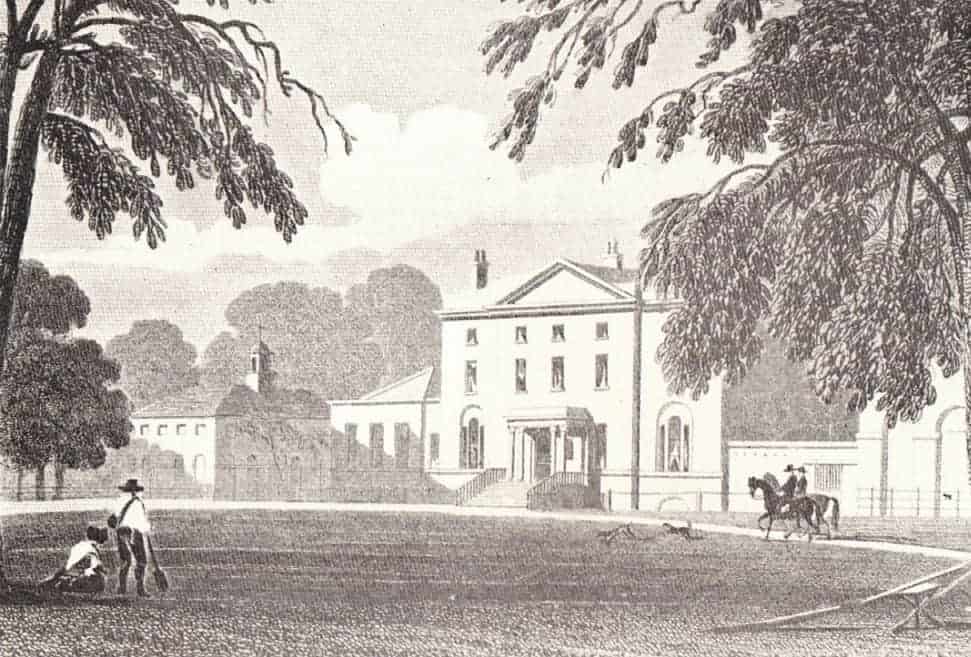
Bury Hill
Lying on the west side of the town of Dorking, the Bury Hill estate was created by Edward Walter. He purchased Chadhurst farm in 1735 and bought up adjoining agricultural lands to build up an estate of 1600 acres which ran from Westcott and Milton to Coldharbour and the fringes of the Holmwood. On his death Bury Hill came into the hands of his son-in-law, Viscount Grimston.
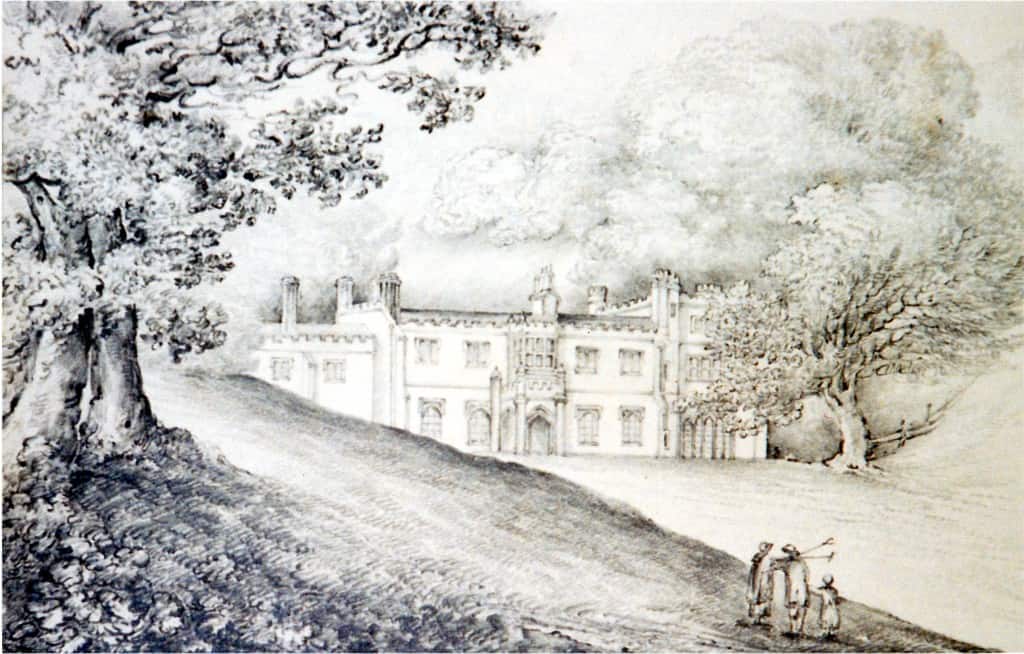
Chart Park
The Chart Park estate in Dorking was created by a merchant, Henry Talbot, who acquired a house called The Vineyard in 1746. Talbot enlarged the house, purchased adjoining lands, including Chart, and renamed the house Chart Park.
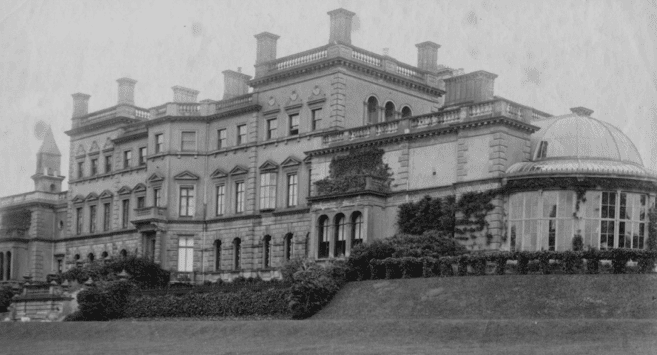
The Deepdene
The Deepdene was the grandest of all the estates in Dorking. After more than 100 years in the Hope family it served as a hotel, and then the Southern Railway HQ during the war, before being demolished in 1967.
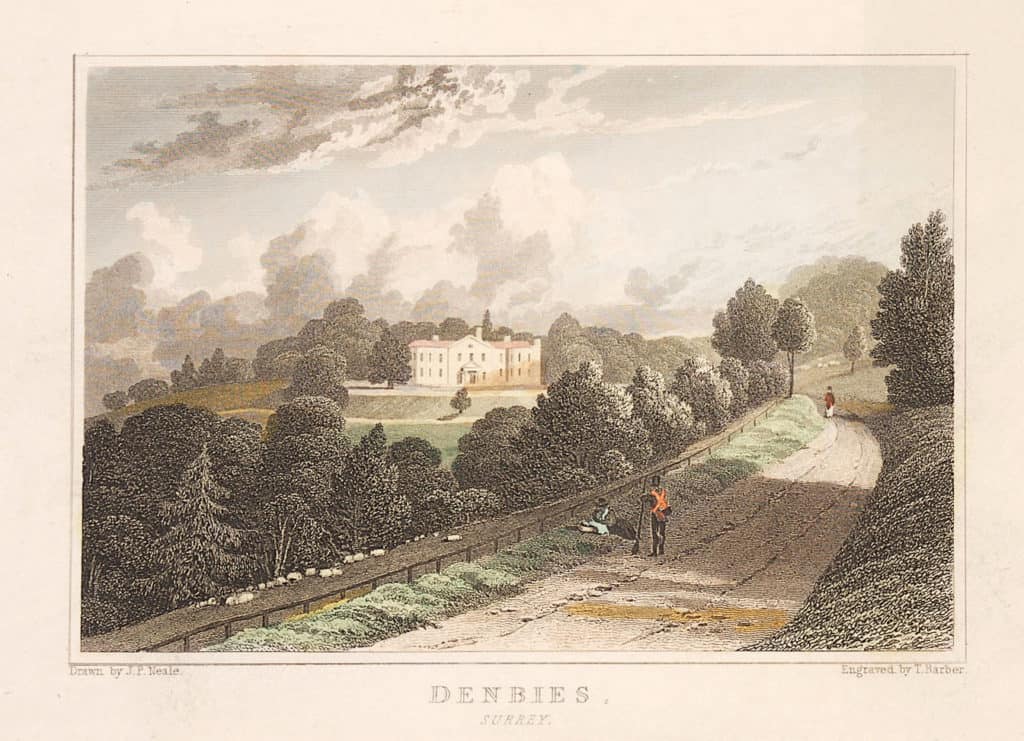
Denbies
To the north-east of Dorking overlooking the slopes of Box Hill, Denbies estate was created by Jonathan Tyers, the wealthy proprietor of Vauxhall Pleasure Gardens. He bought Denbies farm in 1734 and created a country seat for himself there.
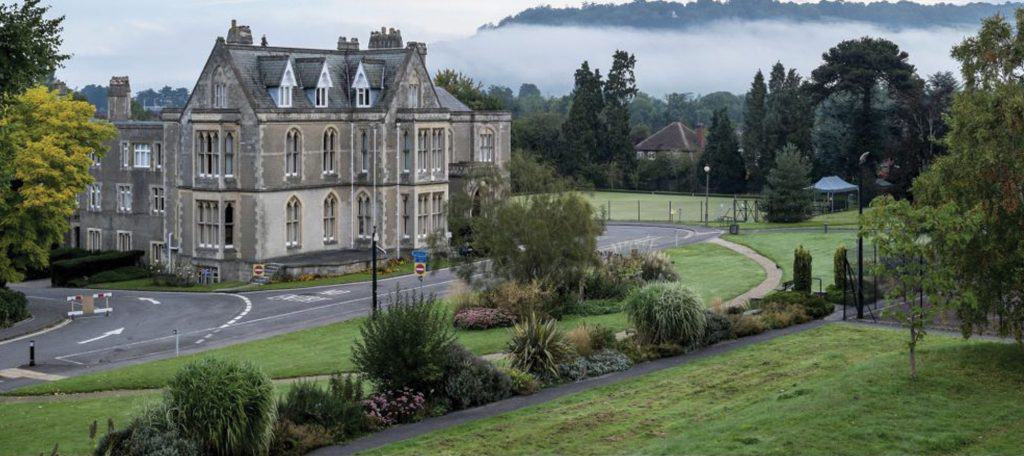
Pippbrook House
Built between 1856 and 1858, the present Pippbrook House in Dorking was designed by the distinguished architect George Gilbert Scott. Although a number of great houses can be found within the Mole Valley area, Pippbrook is the only old country mansion in the town of Dorking that has survived reasonably intact. Moreover, with its richly decorated interior and painted ceilings, Pippbrook House is now a Grade II* listed building, a distinction that English Heritage bestows on only a very small proportion of listed properties.
Photograph of Pippbrook House by Andrew Shaylor. 2015

